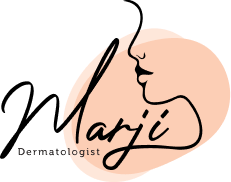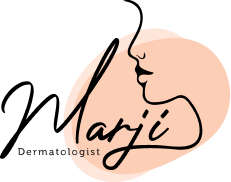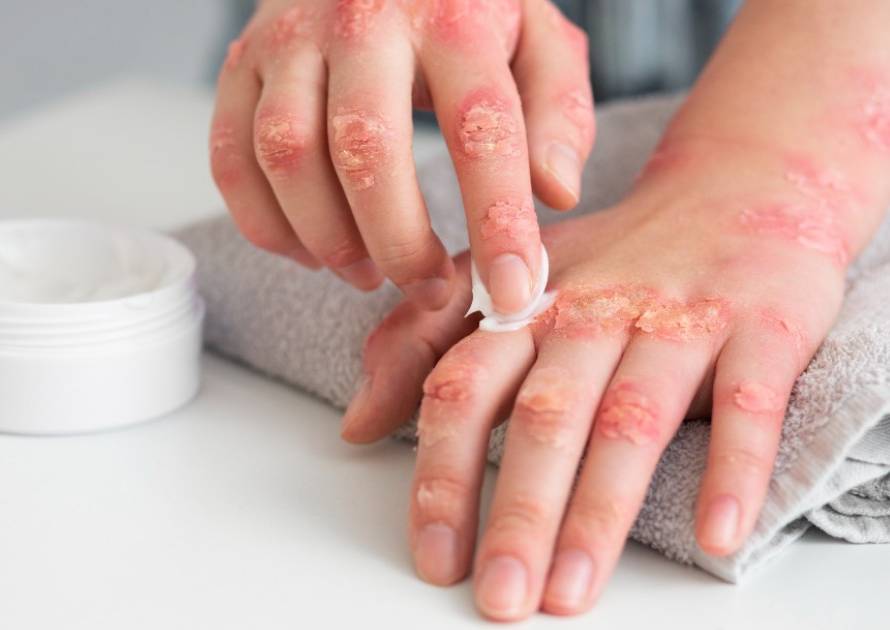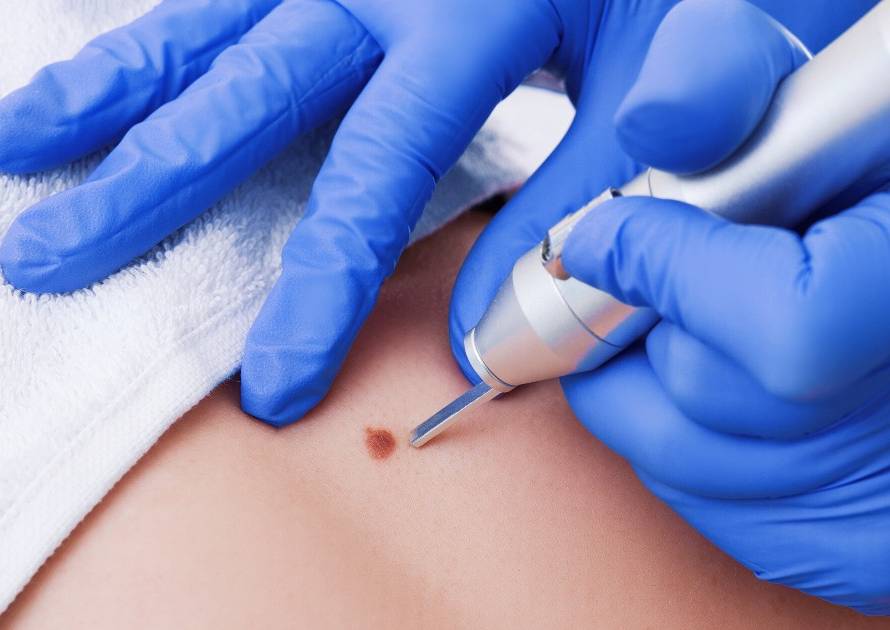Atopic dermatitis (AD) is the most common type of eczema. It affects millions of children and adults all over the world. It’s a chronic condition that can come and go for years or throughout life and can overlap with other types of eczema.
Atopic dermatitis (eczema) is a condition that makes the patient’s skin red and itchy. It is long-lasting (chronic) and tends to flare periodically. It may be accompanied by asthma, hay fever, allergic rhinitis, and food allergies.
For complex reasons that research hasn’t yet wholly uncovered in people with Atopic Dermatitis, the immune system becomes disordered and overactive. This triggers inflammation that damages the skin barrier, leaving it dry and disposed to itching and rashes that may appear purple, brown, or grayish hue in darker skin tones and red in lighter skin tones.
Research shows that some people with eczema, especially atopic dermatitis, have a gene mutation responsible for creating filaggrin. This protein helps our bodies maintain a healthy, protective barrier on the top layer of the skin. Without enough filaggrin to build a strong skin barrier, moisture can escape, and bacteria, viruses, and more foreign bodies can enter. This is why many people with AD have dehydrated and infection-prone skin.
Clinical Features of Atopic Dermatitis
There are various clinic features of atopic dermatitis; those can be concluded in the following points:
- Atopic Dermatitis varies according to the severity from acute to chronic.
- Atopic Dermatitis varies according to age. The distribution changes; it starts appearing on the patient’s face at infancy, then develops to skin folds (flexors), it then gradually gains the ability to spread all over the body or to be contained, especially in areas like palms, soles, nipples, or, other areas.
Characteristics of Atopic Dermatitis
Skin lesions are ill-defined, red lesions that are very dry and itchy. There are characteristics found in patients with atopic dermatitis, such as:
- Perioral darkening.
- Lower eyelid folds.
- Severe dryness all over the body.
- Ill-defined hypopigmented lesion.
- Skin bumps.
Complications and Symptoms of Atopic Dermatitis
Atopic dermatitis (eczema) complications and symptoms vary from person to person. Some of these complications include:
- Asthma and hay fever: Eczema sometimes occurs right before these conditions. More than half of young children with atopic dermatitis develop asthma and hay fever by age 13.
- Chronic itchy, scaly skin: A skin condition called neurodermatitis (lichen simplex chronicus) starts with a patch of itchy skin. Patients usually scratch the area, which makes it even itchier. This condition can cause the affected skin to become discolored, thick, and tough.
- Skin infections: Repeated scratching that breaks the skin can cause open sores and cracks. These cracks and sores could increase the risk of infection from bacteria and viruses, including the herpes simplex virus.
- Irritant hand dermatitis: This mainly affects people who constantly work with water and are exposed to harsh soaps, detergents, and disinfectants.
- Allergic contact dermatitis: This condition is usually common in people with atopic dermatitis.
- Sleep problems: The itch-scratch cycle can disturb patients, and it usually causes poor sleep quality.
Atopic dermatitis usually begins before the age of 5 and could persist into adolescence and adulthood. For some people, it flares periodically and then clears up for a time, even for several years.
General Instructions
Although Atopic Dermatitis is a chronic disease that is not easy to manage and live with, you can follow specific instructions to help you cope with eczema and lessen its side effects. These instructions include:
- Bathe once a day with warm water using fragrance and soap-free cleanser.
- Use moisturizers at least twice a day. Many types of moisturizers like emollients, humectants, and occlusive agents prevent water loss. The best moisturizers are medical ones that suit the patients and are easy to use.
- Avoid triggers like hot weather, sweating, stress, dust, pollens, and friction.
- Bleach baths: Soak your body in diluted bleach to reduce the bacteria on the skin and therefore reduce related infections.
- Dry yourself very well after bathing by patting and using a soft towel, then applying your moisturizer and medications.
Atopic Dermatitis (Eczema) Treatments
As mentioned earlier, Atopic Dermatitis is a chronic disease that cannot be cured entirely. However, we can try to control the symptoms with medical treatment methods, including:
- Topical creams such as steroids and calcineurin inhibitors.
- Phototherapy that uses UVA and UVB lights to treat different types of skin conditions.
- Managing systemic diseases to help treat Atopic Dermatitis.
- Immunomodulators such as Pimecrolimus.
Conclusion
Atopic Dermatitis, commonly known as eczema, is a chronic skin disease that cannot be fully cured. It occurs when triggered for several days, sometimes months, and then it disappears for months, sometimes years.
You can follow the dermatologist’s instructions to manage your eczema. Such instructions include moisturizing your skin at least twice a day, soaking your body in diluted bleach, drying your skin very well after baths, avoiding triggers like hot weather and friction, etc.
Treatments for Atopic Dermatitis are variant and depend on the severity of the condition. Some of these treatments include topical creams, phototherapy, immunomodulators, etc.



